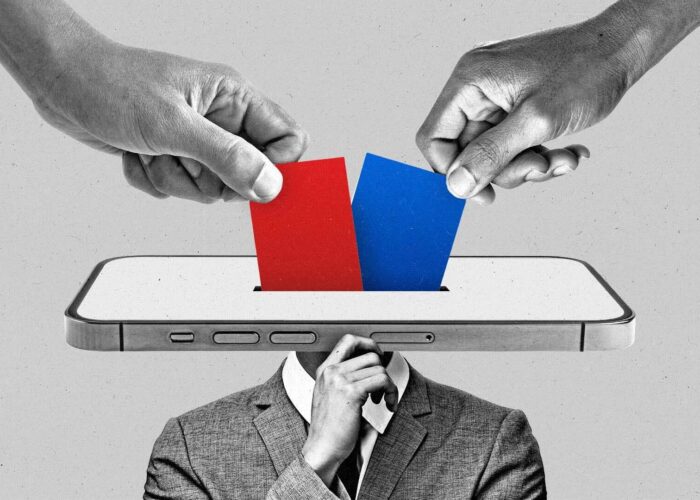The world is at a tipping point. With the climate crisis escalating at an alarming rate, every industry must contribute to achieving a sustainable, zero-carbon future. Media buying — often an overlooked aspect of marketing in terms of environmental impact—presents a powerful opportunity for brands and agencies to reduce their carbon footprint by evaluating energy-intensive processes and vast data exchanges while maintaining performance-driven outcomes. By rethinking how we approach media planning and buying, businesses can align their advertising efforts with global sustainability goals. Drawing inspiration from initiatives like the IPA Media Climate Charter, organizations can take actionable steps to achieve sustainability in digital media buying.
Understanding the Carbon Footprint of Digital Media Buying
Digital media buying involves the procurement of advertising space across various online platforms. While it may seem intangible, media buying contributes significantly to carbon emissions. Consider the energy-intensive nature of programmatic advertising or the carbon footprint of server farms hosting digital campaigns. Every impression, click, and conversion in the media ecosystem comes with an energy cost. The challenge lies in quantifying these emissions and addressing them systematically. Many emissions associated with media buying are categorized as Scope 3 emissions — those indirectly caused by an organization’s activities, such as the energy consumed by third-party servers or content delivery networks.
While media buying is traditionally viewed through the lens of reach, frequency, and ROI, its environmental impact often goes unnoticed. Each step of the process — whether producing an ad, running it across digital channels, or managing data centers for ad delivery — carries a carbon cost. Consider the following contributors to the carbon footprint:
- Data Centers and Servers: The backbone of digital advertising comprises data centers and servers that store and process vast amounts of information. These facilities consume substantial energy, often sourced from non-renewable resources, leading to significant carbon emissions.
- Programmatic Advertising: The automated nature of programmatic advertising involves real-time bidding and instantaneous data processing, further escalating energy consumption.
- Consumer Devices: Advertisements are delivered to a multitude of consumer devices, each requiring power for content display, thereby contributing to the overall carbon footprint.
The Role of Brands and Agencies in Driving Change
The shift toward sustainable practices in media buying isn’t just an environmental imperative—it’s a business advantage. Consumers are increasingly drawn to brands with authentic commitments to sustainability. According to Nielsen, 73% of global consumers say they would change their consumption habits to reduce their environmental impact. For brands, embedding sustainability into campaigns not only satisfies these expectations but also futureproofs operations in a rapidly evolving market.
But how can we make meaningful progress? Here are actionable steps to achieving a zero-carbon future through media buying.
1. Conduct a Carbon Audit for Advertising Operations
The first step toward a zero-carbon future is understanding your current footprint. Conduct a thorough audit of your advertising and media buying processes to assess where emissions are generated. Key focus areas include:
- Production emissions: Energy used in creating content (e.g., studio shoots, editing, VFX).
- Platform emissions: Carbon impact from digital ad servers, DSPs, and SSPs.
- Campaign emissions: Energy required for ad delivery across different channels.
Several tools, such as the AdGreen Carbon Calculator, can help measure emissions specifically for media campaigns. Establishing a baseline will allow you to set measurable targets and track progress.
2. Prioritize Low-Carbon Media Channels
Not all media channels are created equal when it comes to carbon intensity. For instance, TV and digital media generally have higher carbon footprints compared to OOH advertising like billboards or posters. To reduce emissions:
- Invest in DOOH: Emerging media like digital billboards (powered by renewable energy) often have lower carbon emissions than online platforms.
- Optimize Digital Ads: Digital campaigns are essential but should be streamlined to reduce waste. Use targeting to avoid unnecessary ad impressions and limit energy-intensive retargeting.
- Leverage Green Broadcasts: Partner with broadcasters committed to sustainability, such as those powered by renewable energy.
3. Shift to Sustainable Supply Chains
For brands and agencies alike, rethinking their supply chains is key to decarbonizing media buying. This includes working with media owners, production houses, and tech vendors that prioritize sustainability.
- Partner with Green Media Vendors: Look for suppliers with net-zero policies or certifications such as B Corp or ISO 14001.
- Adopt Green Programmatic Practices: Use programmatic platforms powered by renewable energy or with carbon offset strategies in place.
- Insist on Eco-Friendly Production: Choose production companies that integrate sustainable practices, like using solar-powered studios or recycled materials.
By applying pressure to vendors, brands and agencies can create a ripple effect, pushing the entire ecosystem toward greener operations.
4. Integrate Renewable Energy into Digital Advertising
The growth of digital advertising has increased reliance on data centers and cloud computing. These facilities are responsible for substantial carbon emissions, primarily due to energy consumption. Here’s how brands and agencies can drive change:
- Choose Renewable-Powered Platforms: Partner with DSPs and ad tech companies that use renewable energy to power their operations.
- Support Green Data Centers: Use providers that commit to using clean energy, such as Google Cloud and AWS with renewable energy targets.
- Optimize Ad Sizes: Smaller ad file sizes require less data to deliver, which translates to lower energy usage.
5. Embrace Carbon Offset Initiatives
While reducing emissions is the ultimate goal, some emissions will be unavoidable in the near term. Carbon offsetting allows brands to invest in projects that remove carbon from the atmosphere, such as reforestation or renewable energy initiatives.
However, offsetting should not replace efforts to minimize emissions. The focus should remain on reduction first, offset second. Look for offsets that meet rigorous standards, such as the Gold Standard or Verified Carbon Standard (VCS).
6. Set Net-Zero Goals and Publicly Commit
Accountability is crucial in driving meaningful change. Brands and agencies must set clear net-zero targets for their media buying operations and publicly share their commitments. This transparency builds trust with stakeholders and motivates internal teams to stay on track.
Frameworks like the Science Based Targets initiative (SBTi) can guide brands in setting net-zero goals aligned with global climate objectives. Public commitments also help distinguish brands in a crowded marketplace, signaling leadership on sustainability.
7. Educate and Empower Teams
Achieving a zero-carbon future requires cultural change within organizations. Training and education are essential to empower teams with the knowledge and tools needed to implement sustainable media buying practices.
- Provide Sustainability Training: Equip media planners, buyers, and creatives with insights into low-carbon strategies and tools.
- Embed Sustainability into KPIs: Include sustainability goals in employee performance metrics and campaign evaluations.
- Foster Collaboration: Encourage cross-department collaboration to integrate sustainability across functions.
8. Advocate for Industry-Wide Change
While individual brands and agencies can make a significant impact, the scale of the climate crisis requires collective action. By advocating for industry-wide change, businesses can amplify their efforts and drive broader reform.
- Join Initiatives: Participate in initiatives like the IPA Media Climate Charter or Ad Net Zero to align with industry peers and share best practices.
- Collaborate with Partners: Work with media owners, publishers, and tech vendors to establish sustainability standards.
- Lobby for Policy Change: Advocate for government policies that promote sustainable advertising, such as incentives for renewable energy or carbon taxes on high-emission practices.
Measuring Success in the Journey Toward Net Zero
Sustainability in media buying isn’t a one-time effort — it’s an ongoing journey. To ensure progress, brands and agencies must implement systems to measure, report, and improve their carbon performance over time.
Key performance indicators (KPIs) might include:
- Reduction in campaign emissions: Compare year-over-year performance.
- Percentage of renewable-powered platforms used: Increase adoption of clean energy solutions.
- Carbon offset investment: Track contributions to verified projects.
- Supply chain sustainability: Assess vendor compliance with eco-friendly standards.
Regular reporting not only ensures accountability but also provides a compelling narrative to share with consumers and stakeholders.
The Road Ahead: A Collaborative Effort
By 2030, the media-buying landscape could look radically different. Brands and agencies that embrace sustainable practices today will be at the forefront of a transformed industry. Imagine a
world where:
- Every media impression is delivered with zero net emissions.
- Advertisers have the tools to make sustainability a core metric alongside reach and ROI.
- Consumers actively support brands leading the charge toward a zero-carbon future.
Achieving a zero-carbon future through media buying is both a challenge and an opportunity. By auditing emissions, prioritizing low-carbon channels, collaborating with sustainable partners, and leveraging renewable energy, brands and agencies can significantly reduce their environmental impact. The journey demands commitment, innovation, and collaboration, but the rewards—in terms of a healthier planet, enhanced brand reputation, and increased consumer loyalty—are well worth the effort.
The path to a sustainable future starts with bold decisions made today. For brands and agencies, it’s time to lead by example, proving that media buying can be a force for good in the fight against climate change. Together, we can turn every impression into a step toward a zerocarbon world.




